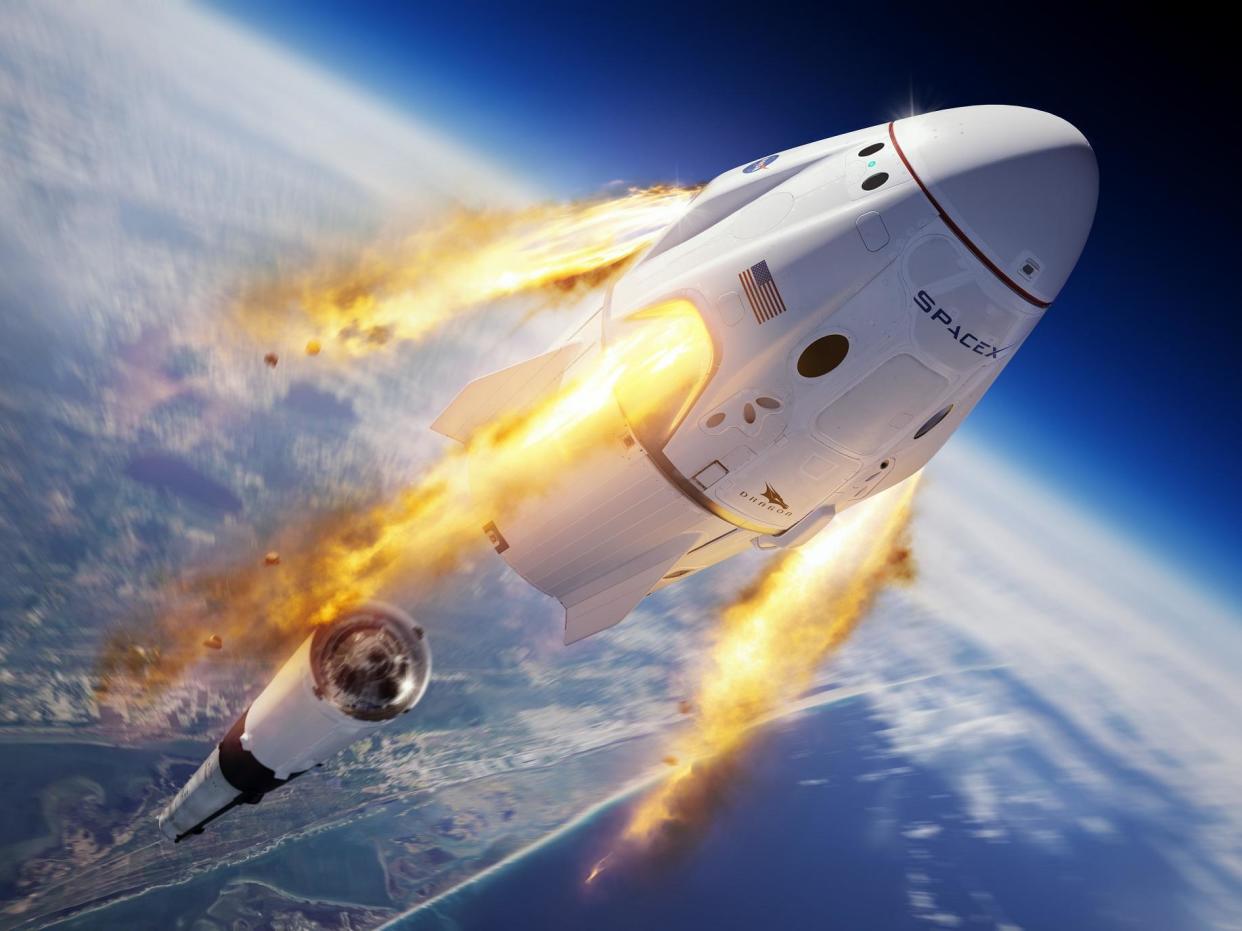NASA head of human spaceflight resigns week before SpaceX launch because of 'mistake'

The head of NASA's human space flight resigned a week before the first manned launch on US soil in almost a decade, citing a "mistake" reported to be over the rush to land on the Moon by 2024.
Saying he took risks for which he must now bear the consequences, Douglas Loverro announced his resignation just six months after joining the space agency to lead the Trump administration's Artemis programme.
It came just eight days before the 27 May launch of two astronauts to the International Space Station in Elon Musk's SpaceX Crew Dragon rocket.
Congresswoman Kendra Horn, who chairs the subcommittee that oversees NASA, said "we need answers".
"I am deeply concerned over this sudden resignation, especially eight days before the first scheduled launch of US astronauts on US soil in almost a decade," Ms Horn said.
The bottom line is that, as the Committee that oversees NASA, we need answers.
— Congresswoman Kendra Horn (@RepKendraHorn)
In an all-hands note to the NASA Human Exploration and Operations Directorate on Tuesday, first reported by SpaceRef, Mr Loverro said that leaders were sometimes called on to take risks, which turned out to be a mistake.
"Our mission is certainly not easy, nor for the faint of heart, and risk-taking is part of the job description," Mr Loverro wrote.
"The risks we take, whether technical, political, or personal, all have potential consequences if we judge them incorrectly.
"I took such a risk earlier in the year because I judged it necessary to fulfil our mission. Now, over the balance of time, it is clear that I made a mistake in that choice for which I alone must bear the consequences."
Quoting two people with knowledge of the situation, The Washington Post reported that the resignation was spurred when Mr Loverro broke a rule during NASA's procurement of spacecraft capable of landing humans on the moon.
On 25 March, NASA's Office of Inspector General announced it was auditing the acquisition strategy for the Artemis missions.
OIG announces audit of NASA's acquisition strategy for the Artemis missions to include landing astronauts on the Moon by 2024.
— NASA OIG (@NASAOIG)
The Artemis programme was announced by the Trump administration in 2019 with the mission to land astronauts on the moon by 2024. The timeline has been criticised for being unrealistic.
In announcing the resignation, NASA administrator Jim Bridenstine was vague but praising of Mr Loverro, saying he hit the ground running and made significant progress.
"His leadership of HEO [Human Exploration and Operations] has moved us closer to accomplishing our goal of landing the first woman and the next man on the Moon in 2024," he said in a note to staff.
"Next week will mark the beginning of a new era in human space flight with the launch of NASA astronauts Bob Behnken and Doug Hurley to the International Space Station."
In partnership with SpaceX, the mission will be the first time since 2011 that humans have reached orbit from US soil.
Mr Loverro, who was reportedly scheduled to lead a final technical review meeting on Thursday ahead of the launch, had been a vocal advocate of the Artemis programme right up until his departure on Monday.
Our @NASA_SLS rocket will launch the #Artemis missions and its astronauts to the Moon. But how does a rocket fly? @NASA_Marshall Aerospace engineer Tracie Prater explains the components that help a rocket launch and fly in our latest #NASAatHome video: https://t.co/n5yKRuKR60 pic.twitter.com/HSsRtbEzvL
— Douglas Loverro (@DouglasLoverro)
Retired naval aviator, Ken Bowersol will step up into the role of acting head of human space flight from his existing role of deputy associate administrator.
Read more
Nasa makes landmark announcement about plan to return to the moon
NASA researcher arrested over alleged secret China connections
Nasa asks private companies to start making lunar landers
Nasa announces first crewed launch from the US in 10 years
What happened on Nasa's dramatic moon mission Apollo 13, 50 years ago

